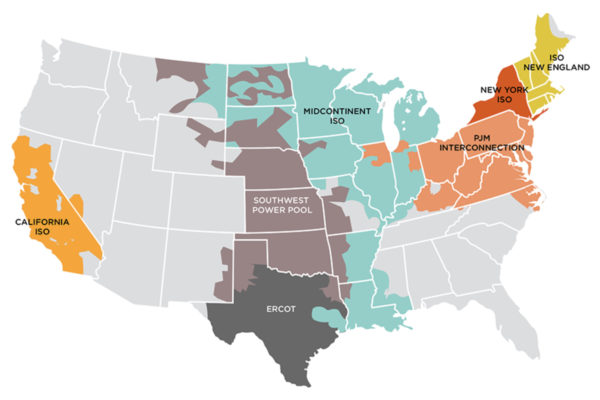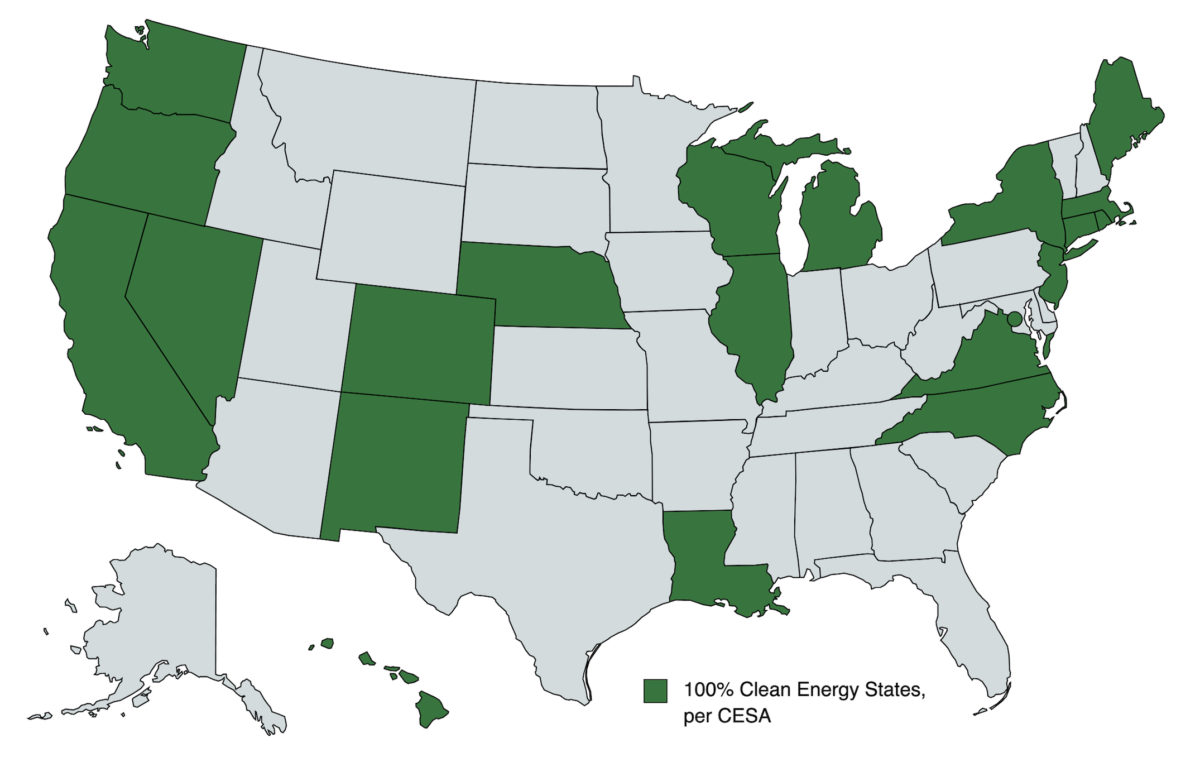With utility-scale solar and storage projects stalled in the PJM grid operator’s interconnection queue, “What should be done to get the queue moving?” asked a participant in a recent webinar. The best approach could be public control of PJM and other regional grid operators, said law professor Shelley Welton.
Public control of grid operators is Welton’s preferred solution for fixing interconnection delays and high fees, as well as grid operators’ “heel dragging” on reforming rules to integrate renewables, and their practice of setting new barriers to renewables. Welton noted that California’s grid operator CAISO is publicly governed. In a law journal article, Welton also discussed three other possible improvements to governance of grid operators, short of public control.
The Clean Energy States Alliance hosted the webinar, to discuss how the 20 “clean energy states,” which have committed to reaching 100% clean energy, can influence grid operators to advance clean energy.
States have many options to exercise influence through existing channels, as described in a report for the 100% Clean Energy Collaborative, which the Alliance supports. Some states have also considered a partial exit, notes the report, as Illinois, New Jersey and Maryland explored options to bypass the PJM capacity market, with its anti-renewables “minimum offer price rule,” in 2020.

Asked on the webinar how clean energy states might prioritize their efforts, between seeking structural reform of grid operators versus influencing them through existing channels, Welton said “part of this is a strategic question about, can you get the leverage you need for the big reforms? Probably the answer depends on FERC’s appetite,” referring to the Federal Energy Regulatory Commission.
“Maybe the best way to do this would be to backchannel with FERC as much as possible,” Welton said, “to understand which commissioners have an appetite for real change. And are they going to support you if you push for it?”
“The dynamics of what else is on their docket, what their priorities are, really matters, for how much states should push for big structural change versus, go along for the ride and try to accomplish some of their substantive goals as best as possible” through existing channels.
As for the clean energy states in the West and Southeast that are outside of a regional grid operator, the report and webinar discussed ongoing initiatives for regional coordination.
Welton’s article, titled “Rethinking Grid Governance for the Climate Change Era,” was praised by Bentham Paulos, author of the collaborative’s report, as a “page-turner” relative to other law journal articles. A recording of the webinar is available online.
This content is protected by copyright and may not be reused. If you want to cooperate with us and would like to reuse some of our content, please contact: editors@pv-magazine.com.








““Maybe the best way to do this would be to backchannel with FERC as much as possible,”” . . .
This will be great to see!